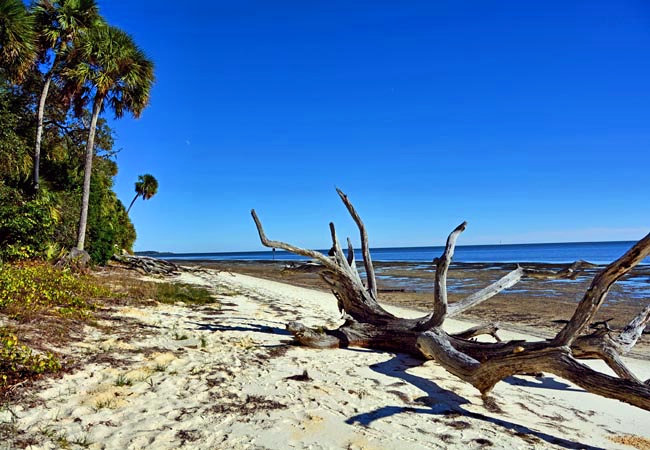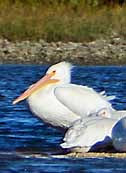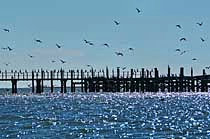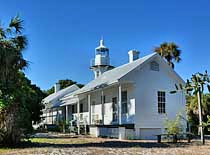|
Scenic USA - Florida Cedar Keys |

| Photos by Ben Prepelka Ben Prepelka Photography |
Sprouting up along the shores of Way  Key during the mid 1800s, Cedar Key is the most prominent town among a group of local islands in the Gulf of Mexico just west of Ocala. Lying off the west coast of Florida, about half way between Tampa and Tallahassee, the Cedar Keys were named for their abundance of cedar trees. The area's trees were a key element for the Faber and Eagle pencil manufacturing companies. The Faber saw-mill was on set up on Atsena Otie Key, and shipped out cedar slats to New Jersey where the pencils were made. A similar mill was built on Way Key for the Eagle Pencil Company. The trees were indiscriminately harvested and totally wiped out by a hurricane in 1896, putting an end to this reckless lumbering industry.
Key during the mid 1800s, Cedar Key is the most prominent town among a group of local islands in the Gulf of Mexico just west of Ocala. Lying off the west coast of Florida, about half way between Tampa and Tallahassee, the Cedar Keys were named for their abundance of cedar trees. The area's trees were a key element for the Faber and Eagle pencil manufacturing companies. The Faber saw-mill was on set up on Atsena Otie Key, and shipped out cedar slats to New Jersey where the pencils were made. A similar mill was built on Way Key for the Eagle Pencil Company. The trees were indiscriminately harvested and totally wiped out by a hurricane in 1896, putting an end to this reckless lumbering industry.
Maritime commerce, shipping out tons of naval stores and lumber, called for a lighthouse on  Seahorse Key in 1850. The Cedar Keys lighthouse, completed in 1854, is perched on a 50 foot hill. The lantern room, about 75 feet above sea level, was visible for 16 miles out in the Gulf of Mexico. Wood-frame keeper's quarters were added to each side of the lighthouse soon after it came on-line. Today, the lighthouse offers an open house six times a year, with area tour boats providing transportation to Seahorse Key.
Seahorse Key in 1850. The Cedar Keys lighthouse, completed in 1854, is perched on a 50 foot hill. The lantern room, about 75 feet above sea level, was visible for 16 miles out in the Gulf of Mexico. Wood-frame keeper's quarters were added to each side of the lighthouse soon after it came on-line. Today, the lighthouse offers an open house six times a year, with area tour boats providing transportation to Seahorse Key.
Once a main hub for shipping seafood and produce, now Cedar Key is described as a sleepy fishing village. The keys still rely on the sea for a large chunk of its local economy, whether its seafood or tourism.  Catering to visitors, a string of restaurants along the waterfront offers picturesque views of the Gulf and plenty of seafood fare. You'll also find a variety of artwork and crafts on display along Dock Street. Cedar Key tour boats set out from the docks, offering an overview of Way Key history and connecting visitors with the outer islands of the Cedar Keys National Wildlife Refuge.
Catering to visitors, a string of restaurants along the waterfront offers picturesque views of the Gulf and plenty of seafood fare. You'll also find a variety of artwork and crafts on display along Dock Street. Cedar Key tour boats set out from the docks, offering an overview of Way Key history and connecting visitors with the outer islands of the Cedar Keys National Wildlife Refuge.
Some of the larger islands, as many as a dozen, make up the Cedar Keys National Wildlife Refuge. Its 800 acres protects a diminishing number of wildlife species, especially wading birds and nesting shorebirds. Atsena Otie Key, also accessed by boat, is governed by the U.S. Fish and Wildlife Service. Improvements on Atsena Otie include a dock and hiking trail. Foundation remnants of the Faber Pencil Mill can still be found on Atsena Otie Key.
Area Map

|
Nearby Points of Interest |
Scenic USA Prints from
|
Copyright © 2020 Benjamin Prepelka
All Rights Reserved

